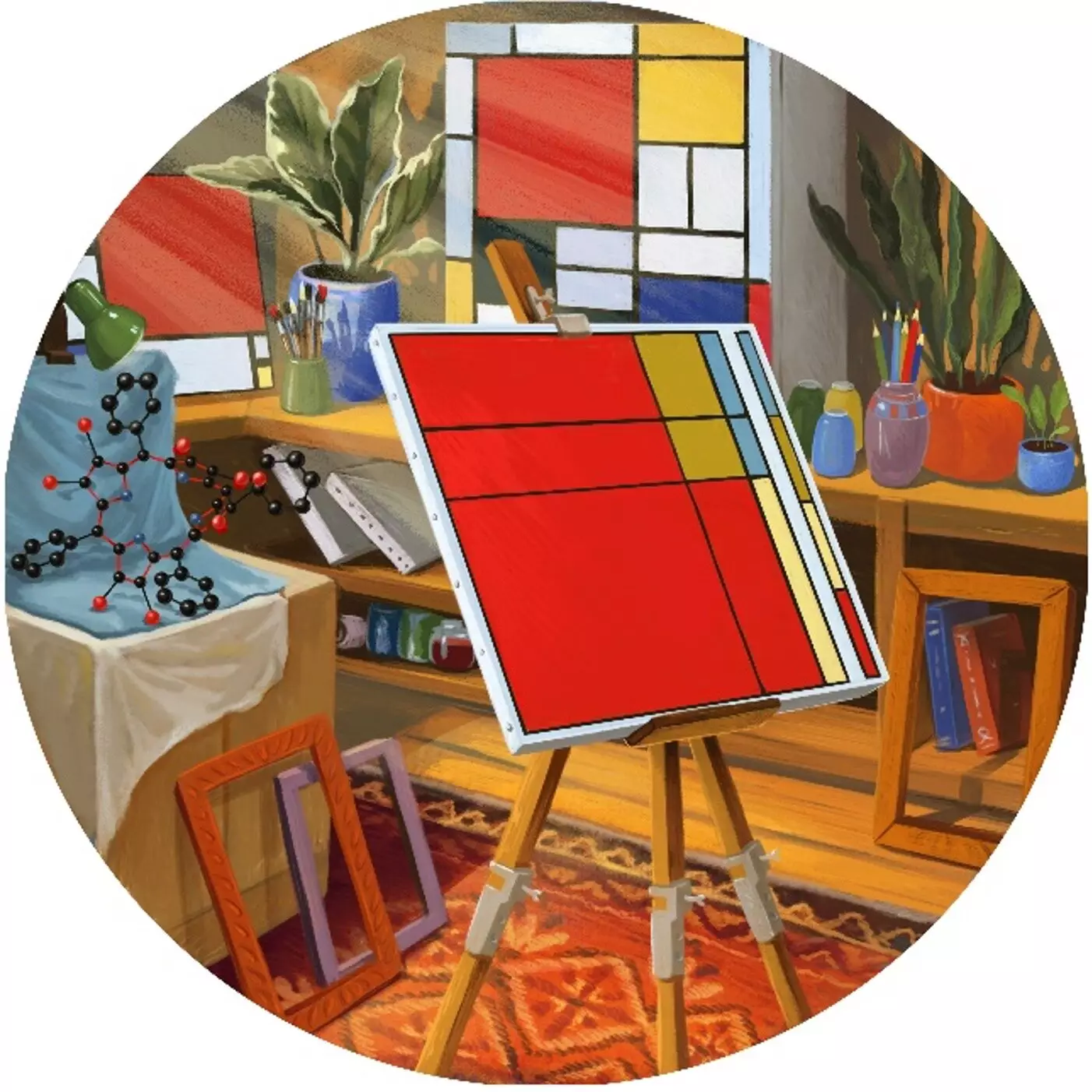In an audacious move that juxtaposes the precision of scientific inquiry with the creativity of artistic expression, researchers from Trinity College Dublin have brought forth a stunning innovation. By developing a computer program that manifests molecular structures in the stylistic flair of Piet Mondrian, a Dutch artist revered for his minimalist and geometrically pure compositions, the team has effectively fused two seemingly disparate disciplines. This initiative not only highlights the aesthetic appeal of chemistry but also transforms the traditional understanding of molecular representation.
The genius lies in the ingenious algorithm that the researchers employed, merging deep chemical principles governing the three-dimensional configurations of molecules with the distinctive use of primary colors and bold lines typifying Mondrian’s masterpieces. This remarkable synthesis of art and science serves as a testament to how creativity can enhance scientific comprehension and vice versa.
Bridging the Complex with the Visual
At first glance, the program may appear as just a whimsical endeavor, appealing to the more artistic-minded individuals in the scientific community. However, its implications are profound. For chemists, the representations produced by this program can facilitate swift assessments of molecular symmetry—sparking deeper inquiries into the arrangement and properties of molecules. Traditional depictions of molecular structures often risk veiling crucial information under layers of complexity. In contrast, this artistic interpretation strips away extraneous details, presenting a simplified yet insightful visualization that can unveil patterns and behaviors that might be overlooked otherwise.
The beauty of this art-science collaboration lies not merely in aesthetics; it involves a thought-provoking reconsideration of how information is conveyed. As Christopher Kingsbury, the project’s driving force, points out, presenting molecular structures universally allows for a greater comprehension of how those structures might behave in various contexts. This aligns with Mondrian’s vision of abstract representation, demonstrating how simplifying complexity can illuminate fundamental truths.
Reimagining Molecular Symmetry Through Artistic Lenses
Professor Mathias O. Senge, a leading figure in this venture, aptly notes that both symmetry and shape are intrinsic to molecular structure. Through the striking visual language borrowed from Mondrian’s oeuvre, the researchers aim to disentangle the intricate relationship between chemical structures and their respective properties. The resulting artworks not only serve as a window into the molecular realm but also provoke discussions about symmetry’s role in chemistry.
The transformation of complex three-dimensional data into flat two-dimensional art engages a broader audience, inviting those outside the scientific community to appreciate the intricacies of molecular life. Such crossover is crucial in a world that often segregates science and art into two separate realms of knowledge and appreciation. By democratizing the representations of molecules, the initiative encourages a new generation of scientists and artists alike to forge connections and explore the intersections of their disciplines.
The Future of Chemical Exploration and Artistic Expression
The allure of enhanced visual communication resonates strongly within the scientific community, particularly as it relates to the study of unique classes of compounds such as porphyrins—often dubbed the “colors of life.” These intensely colored pigments, crucial in biological processes, serve not just as pigments but also as robust subjects for both scientific inquiry and artistic exploration. As the researchers continue to delve into the complex interplay of structure and function in porphyrins, the artistic lens provided by Mondrian’s influence may yield novel insights that traditional methods might miss.
In their pursuit, Professor Senge and his team have previously engineered porphyrins into biological sensors with remarkable specificity, akin to tiny Venus flytraps. Their latest endeavor brings this line of inquiry into the artistic sphere, presenting an invaluable opportunity for enhanced understanding. By approaching familiar molecules through the lens of art, scientists might glean new perspectives on the relationship between molecular structure and its environmental interactions.
Art as a Catalyst for Scientific Understanding
The dual narrative of artistry and scientific rigor invites a refreshing discourse on the significance of interdisciplinary collaboration. This innovative program encourages us to envision science not merely as a repository of facts and figures but as a vibrant tapestry interwoven with artistic inspiration. The familiar shapes and colors epitomized by Mondrian’s art breathe new life into the static representations of molecules, urging both scientists and the public to rediscover the aesthetic dimensions of their work.
Ultimately, in a world continuously striving for interdisciplinary collaborations, this initiative stands as a shining example of how creativity can fuel scientific progress. By harnessing the artistic impulses of figures like Mondrian, researchers have opened the door to a wealth of understanding that celebrates both the elegance of molecular structures and the transformative power of artistic vision. The dialogues opened by this melding of worlds are poised to enrich the fields of chemistry and art, inviting all to partake in a revolutionary paradigm of inquiry and expression.

